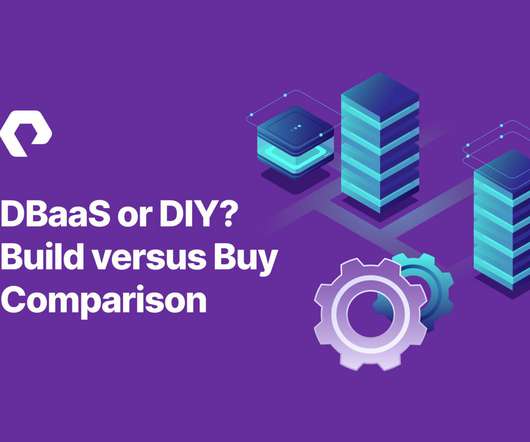DBaaS or DIY? Build versus Buy Comparison
Pure Storage
MAY 4, 2022
A DIY setup will require additional CAPEX and OPEX resources, such as servers, a new topology design, and more developers and support staff to prepare the required database capacity. Outsourcing staff considerations also neatly sidesteps the challenge of employee retention in the highly competitive software developer market.












Let's personalize your content